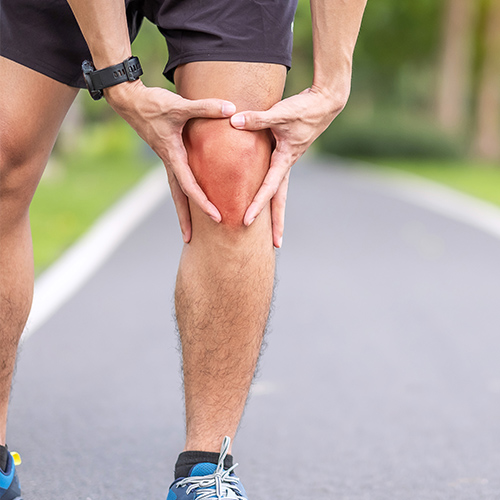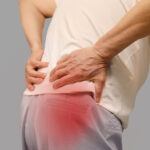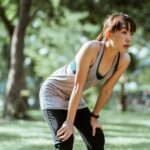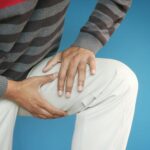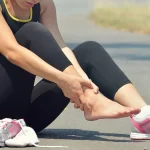Key Pointers:
- Hip osteoarthritis (OA) does not always mean giving up physical activity.
- Movement helps maintain joint flexibility and reduces stiffness.
- Low-impact activities like swimming, cycling, and Pilates are joint-friendly.
- Strengthening surrounding muscles can ease pressure on the hip joint.
- Rest is important, but complete inactivity may worsen symptoms.
Hip Osteoarthritis in Daily Life
Living with hip osteoarthritis often brings a big question: “Should I stop moving to avoid making it worse?” It’s natural to think rest is the safest choice when you feel pain or stiffness. But in reality, completely avoiding activity can lead to weaker muscles, tighter joints, and greater discomfort over time.
Hip OA happens when the cartilage cushioning your hip joint wears down, causing pain, reduced mobility, or even difficulty with daily movements like walking or standing up. While it can be frustrating, many people are still able to enjoy active lifestyles with the right adjustments.
Why Rest Alone Is Not the Answer
It may sound counterintuitive, but too much rest can actually make hip osteoarthritis worse. Inactivity allows muscles to weaken, which puts more pressure on the hip joint. Without movement, the joint can also stiffen, making simple tasks harder.
This doesn’t mean ignoring pain and pushing through high-impact workouts. Instead, it’s about finding the middle ground, gentle, consistent movement that supports the hip without straining it.
What Exercises Are Friendly for Hip Joints?
Not all exercise is equal when it comes to hip osteoarthritis. The goal is to choose movements that strengthen muscles, maintain flexibility, and improve circulation, all while reducing impact on the hip.
Some helpful options include:
- Swimming or water aerobics – Buoyancy supports your body weight, reducing joint stress.
- Cycling (stationary or on flat terrain) – Builds strength and endurance with smooth, controlled motion.
- Pilates or yoga – Improves flexibility, posture, and core strength to support hip alignment.
- Walking on even surfaces – Gentle, regular walking helps keep joints mobile without jarring movements.
Always start slowly, and listen to your body. A gradual increase in duration or intensity is safer than sudden bursts of activity.
Strengthen Your Muscles Around the Hip
When you have hip osteoarthritis, strong muscles around the joint act like natural shock absorbers. Exercises targeting the glutes, thighs, and core can provide added stability and help reduce pain. Simple bodyweight moves, like side leg raises, mini squats, or bridges, can be effective when done regularly and with proper technique.
Working with a physiotherapist or orthopaedic doctor can help you learn which exercises are best suited to your condition.
Lifestyle Tips That Make a Difference
Beyond exercise, small lifestyle changes can go a long way in managing hip osteoarthritis:
- Maintain a healthy weight to reduce pressure on your hips.
- Use supportive footwear to ease impact while walking.
- Take short breaks from sitting to stretch and move.
- Apply heat before activity to loosen joints, and cold after exercise to calm any flare-ups.
When to Seek Medical Advice
Staying active is encouraged, but there are times when medical attention is necessary. If you notice persistent pain despite adjustments, sudden worsening of symptoms, or difficulty with everyday tasks, it’s best to consult a doctor. Treatment options can include medication, physiotherapy, or in some cases, surgical interventions like hip replacement.
Final Takeaway
Hip osteoarthritis doesn’t mean the end of an active lifestyle. With low-impact exercises, muscle strengthening, and mindful daily habits, many people continue to stay mobile and engaged in the activities they enjoy. The key is balance, rest when needed, but don’t give up movement altogether.
Key Pointers Recap:
- Movement is beneficial for hip osteoarthritis, while complete rest can worsen symptoms.
- Low-impact activities like swimming, cycling, and Pilates are recommended.
- Strengthening muscles around the hip helps reduce joint pressure.
- Lifestyle habits such as weight management and proper footwear make a difference.
- Seek medical advice if symptoms worsen or limit daily activities.
Take the Next Step with Liberty Orthopaedic Clinic
At Liberty Orthopaedic Clinic, Dr. Lee Eu Jin and the team provide patient-centred care for hip conditions, including hip osteoarthritis. If hip pain is affecting your daily activities, don’t wait until it worsens.
Book an appointment with Liberty Orthopaedic Clinic today to discuss your symptoms and explore treatment options tailored to your needs.

